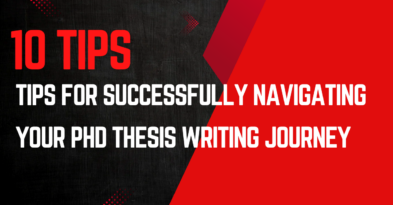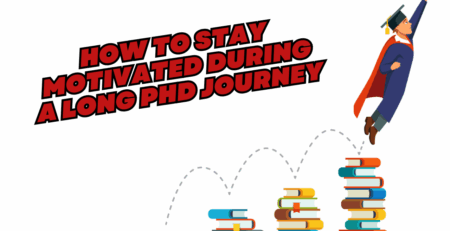Action Research vs Traditional Methods: A Complete Guide for Educators and Researchers
Kenfra Research - Bavithra2025-10-09T17:21:09+05:30In today’s education system, teachers and researchers are always looking for better ways to improve learning. One popular topic that many discuss is Action Research vs Traditional Methods. Both play an important role in educational research and help in developing effective teaching strategies. Understanding how these two approaches differ helps educators choose the right method for their goals.
Action Research vs Traditional Methods may sound similar, but they have very different purposes and processes. While traditional research focuses on theories, data, and large samples, action research is more personal and classroom-based. It allows teachers to explore their own teaching, find what works best, and make changes to improve learning outcomes.
This simple guide will explain both approaches, their features, and how they can be used together to create better results in education.
Understanding Action Research in Education
Action research is a type of teacher-led research where educators become active participants in studying their own classrooms. It involves identifying a gap or problem in current teaching practices, trying out a solution, and observing the results. The goal is to improve teaching and learning through reflective teaching practices.
It is often described as classroom-based research because it happens directly in the classroom and addresses real-life issues. Teachers may use applied research in education to test a new teaching method, improve student engagement, or solve classroom challenges.
Main Features of Action Research
- It helps solve practical classroom problems.
- Teachers act as both researchers and learners.
- It supports collaborative research in education, where teachers share ideas and results.
- It encourages reflective practice in teaching, helping educators think deeply about what works.
- It offers quick feedback and visible improvements.
When teachers conduct action research examples in education, they may study things like improving group work, testing digital tools, or enhancing classroom communication. This approach is also part of teacher professional development research, as it helps teachers grow in their profession while improving student outcomes.
Exploring Traditional Research Methods in Education
Traditional research is a more formal and structured way of studying education. It is often carried out by academic researchers or scholars rather than teachers. It uses scientific methods, large samples, and data analysis to reach conclusions that can be applied widely.
Traditional research focuses on producing general results that can apply to many schools, rather than one classroom. It forms the base of educational research methods that guide theories, models, and teaching frameworks.
Key Features of Traditional Research
- It uses fixed steps such as data collection, analysis, and reporting.
- It values objectivity and accuracy.
- It aims to create general knowledge for education systems.
- It relies on surveys, experiments, and case studies.
- It supports research methodology in teaching through structured designs.
However, while traditional research is valuable, it often takes more time and may not directly solve classroom problems. Teachers may find it less flexible compared to action research, which is hands-on and immediate.
Action Research vs Traditional Methods: The Key Comparison
The main difference between these two research methods lies in their purpose and approach. Both are useful but serve different needs in education.
When comparing Action Research vs Traditional Methods, it is clear that both contribute in different ways. Teachers can use action research to improve daily teaching, while universities and research institutes rely on traditional research for broader understanding and policy formation.
Benefits and Limitations of Action Research in Education
Action research has many advantages for teachers and learners. It builds a bridge between theory and practice by helping teachers directly apply what they learn.
Some Key Benefits Include:
- Encourages reflective teaching practices that help teachers learn from experience.
- Promotes teamwork and collaborative research in education.
- Provides quick solutions to classroom problems.
- Builds teacher confidence and creativity.
- Helps in teacher professional development research, supporting career growth.
- Improves student learning outcomes through real-time feedback.
By applying research methodology in teaching, educators can better understand their learners, teaching styles, and classroom dynamics.
Some Limitations are:
Although action research is highly practical, it also has a few limitations that teachers should consider:
- It often focuses on small groups, so results may not apply everywhere.
- The teacher’s personal bias can influence the results.
- It may lack the detailed statistical analysis found in traditional research.
- Time constraints can affect data collection and reflection.
- Findings are sometimes hard to publish in academic journals.
Despite these limitations of action research, it remains an effective approach for improving classroom teaching and learning because it produces immediate and meaningful results.

Advantages and Disadvantages of Traditional Research Methods
Advantages of Traditional Research Methods:
Even though it is more formal, traditional research has clear advantages that make it important in education:
- It provides strong, evidence-based findings that can guide policy.
- It helps develop educational theories that shape curriculum and instruction.
- The structured process ensures accuracy and reliability.
- It allows comparison across large groups and schools.
- It forms the foundation for academic progress and innovation.
These advantages of traditional methods make them essential for building long-term educational knowledge.
Disadvantages of Traditional Research
While traditional research adds value to educational theory, it has some limits in practical use.
- It can take a long time to complete and publish.
- It may not reflect the daily realities of classrooms.
- Teachers usually do not have an active role.
- It focuses more on theories than on immediate classroom results.
These limitations of traditional research show why many educators now prefer action research for school-based improvement and faster implementation.
Conclusion
The comparison of Action Research vs Traditional Methods shows that both are important in education. Traditional research brings academic depth and theory, while action research focuses on practice and change. When teachers use both together, they create a strong foundation for continuous improvement and innovation in schools.
For educators and researchers, understanding how to balance both approaches is the key to success. Traditional research provides knowledge; action research turns that knowledge into action.
With expert support from Kenfra Research, educators and scholars can better understand how to connect academic research with real-world classroom practices—making education more meaningful, reflective, and result-oriented.








